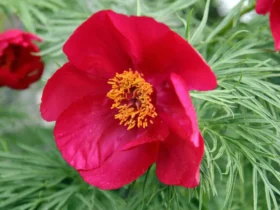In the intricate world of orchids, where beauty and diversity abound, one particular species stands out with its captivating allure and ingenious adaptation. Meet the Bee Orchid (Ophrys apifera) is one of the Famous and Exotic flowers in Spain, a remarkable flower that not only captures the eye with its delicate form and vibrant colors but also employs an extraordinary strategy to attract its pollinators. In this article, we will explore the fascinating world of the Bee Orchid, uncovering its appearance, behavior, pollination mechanism, and the importance of its conservation.
Bee Orchid images
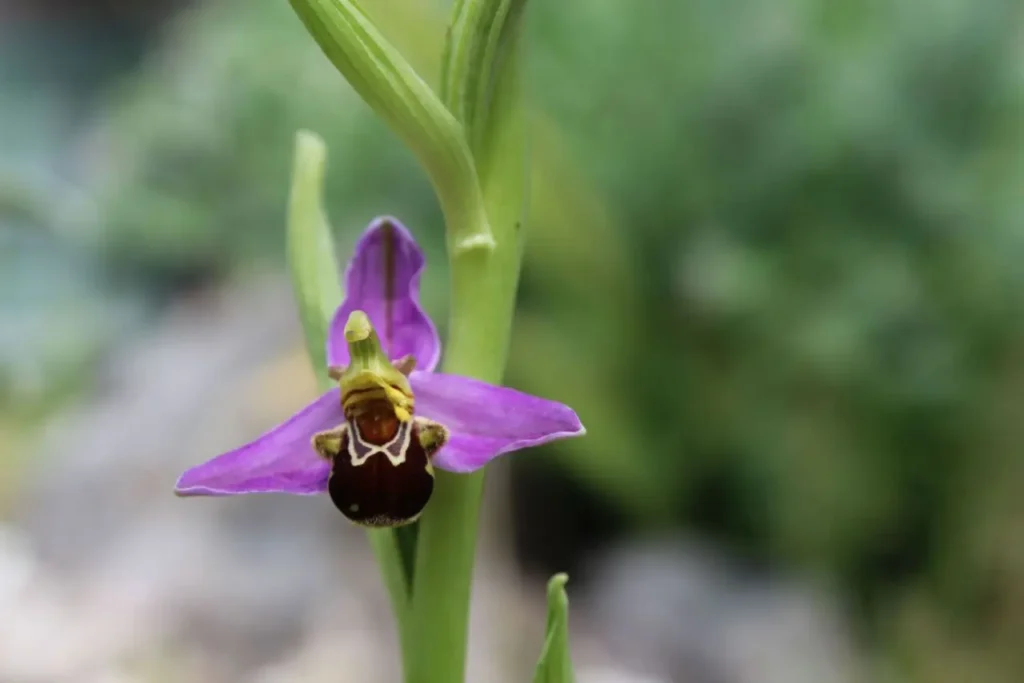
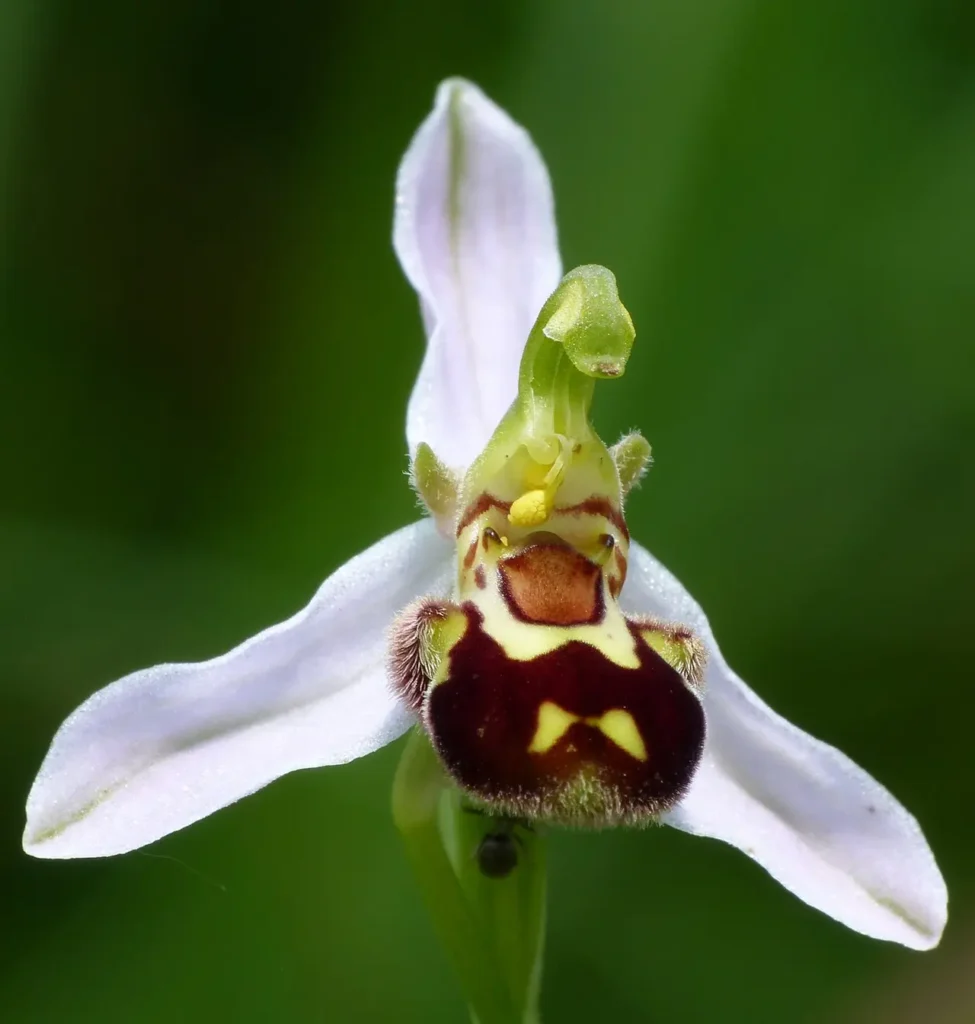
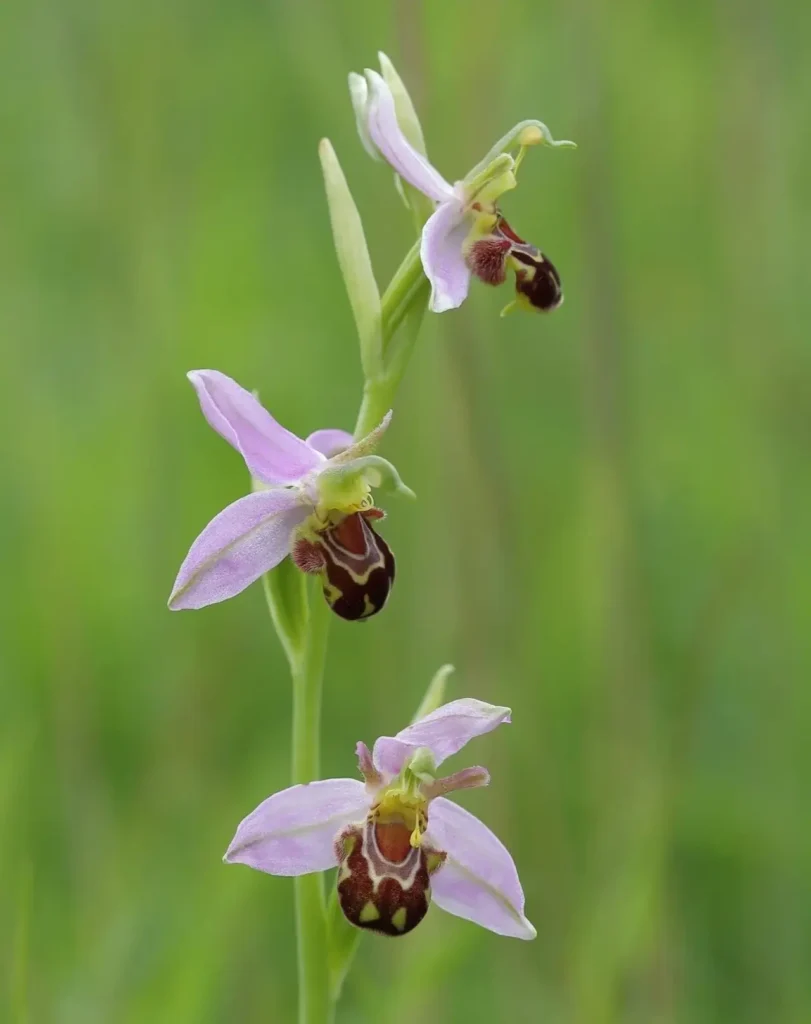
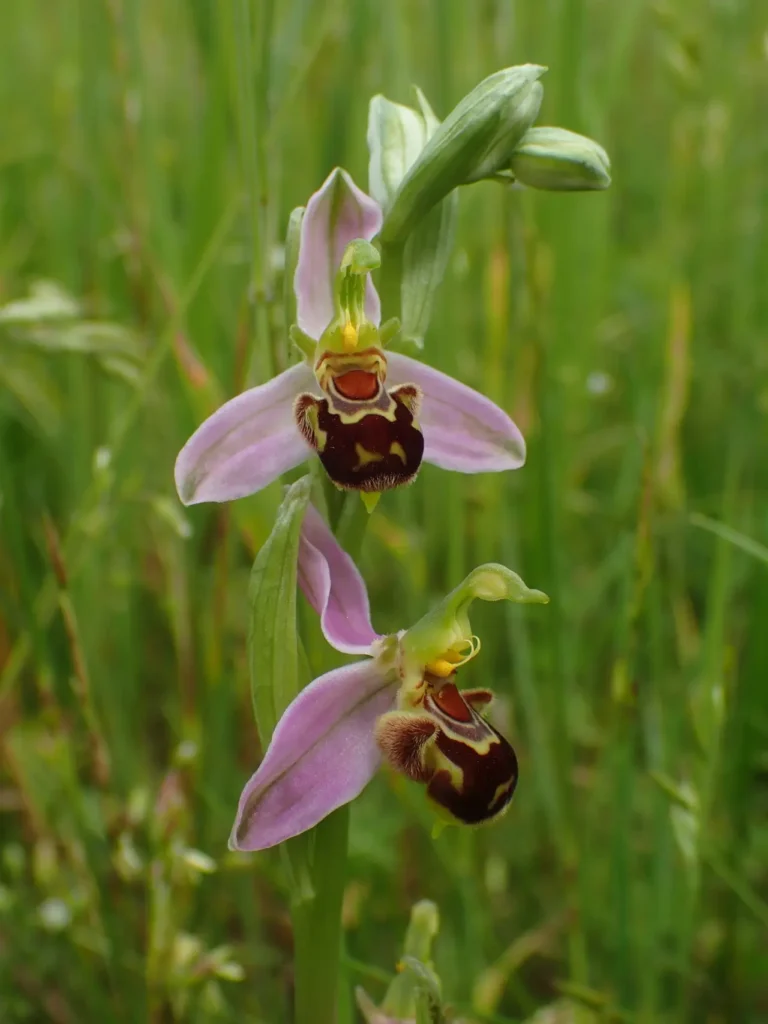
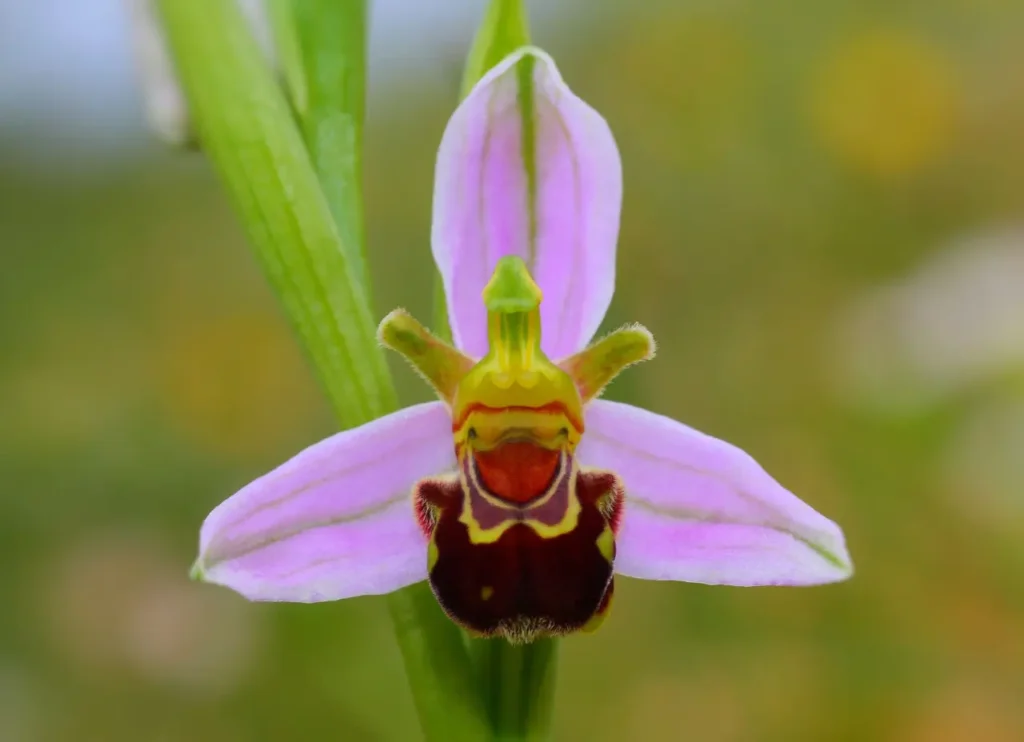
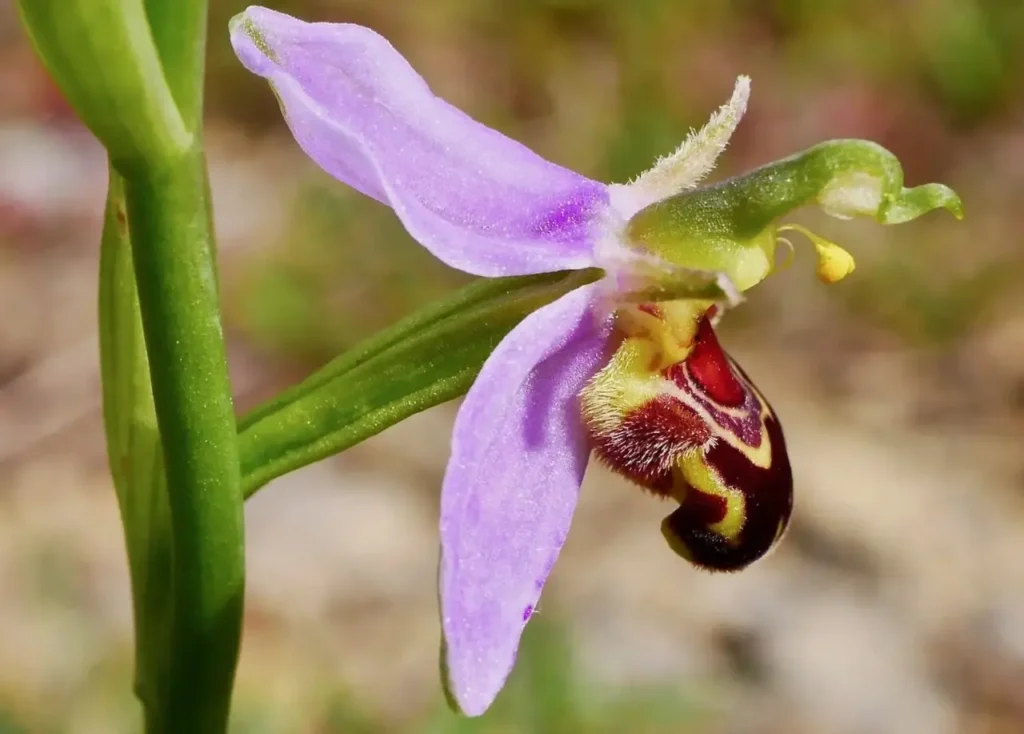
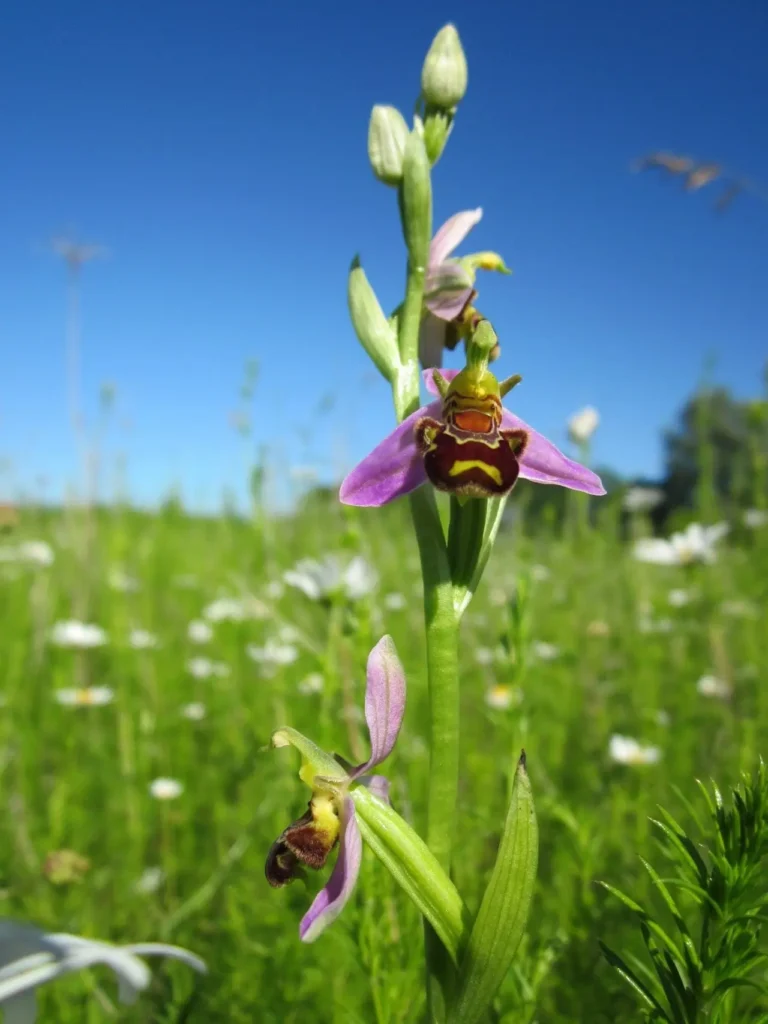
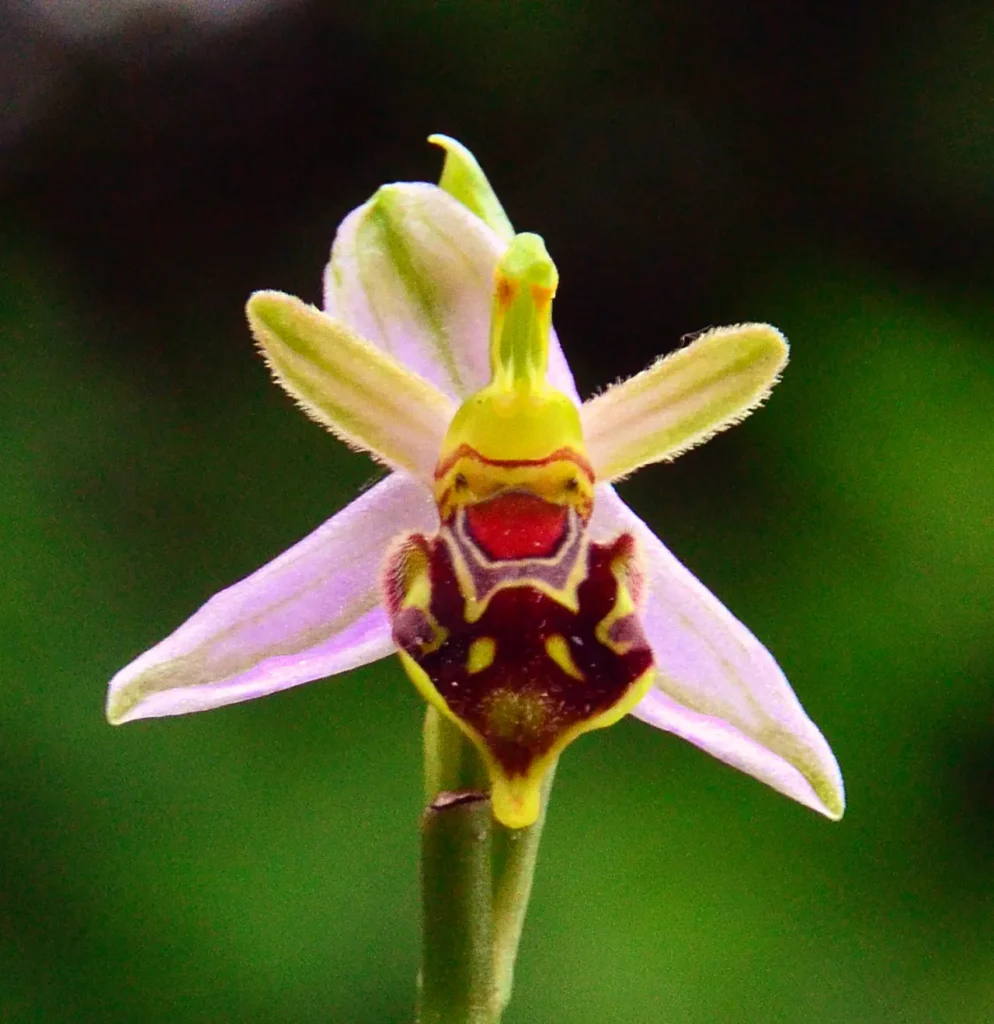
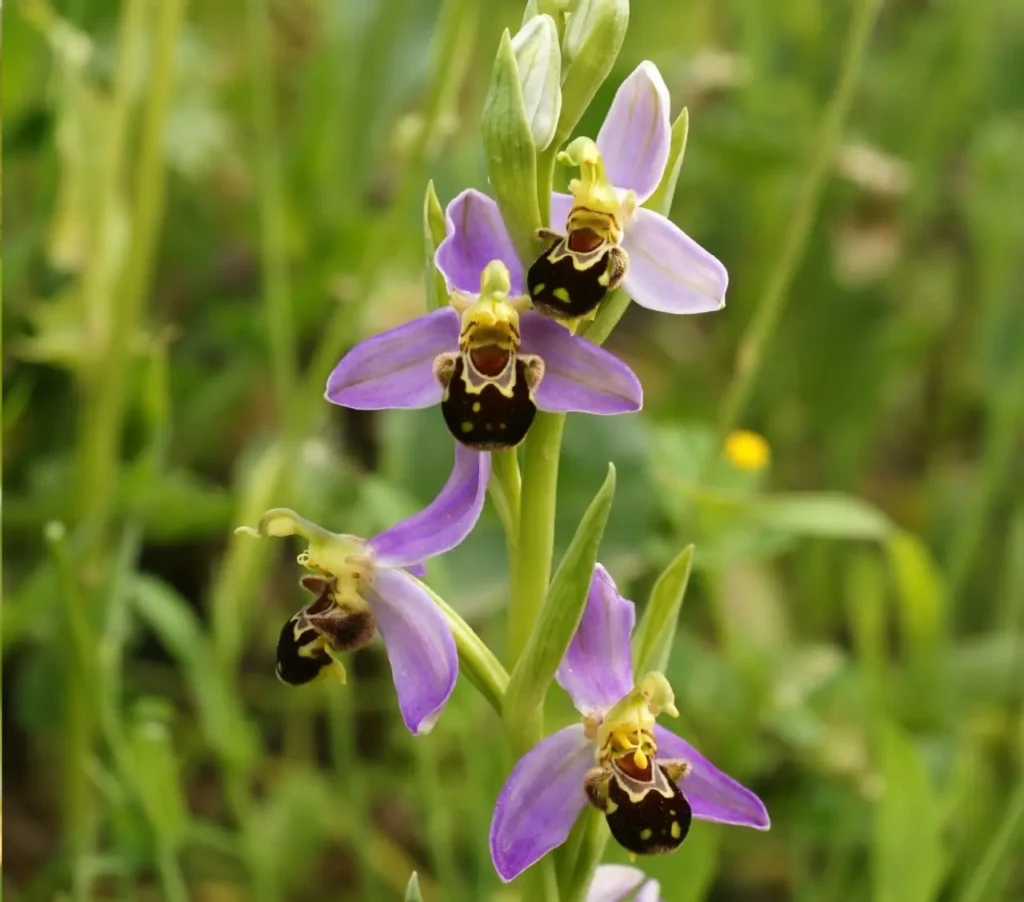
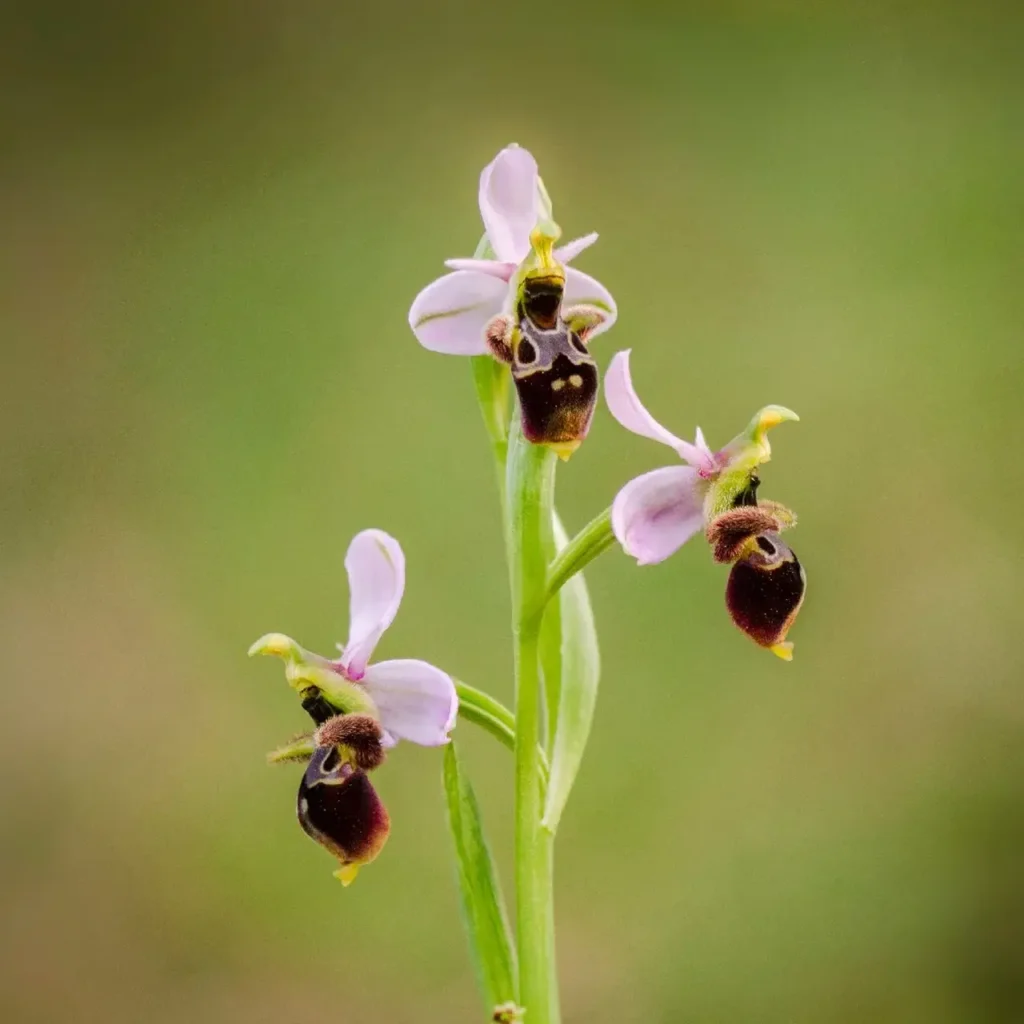
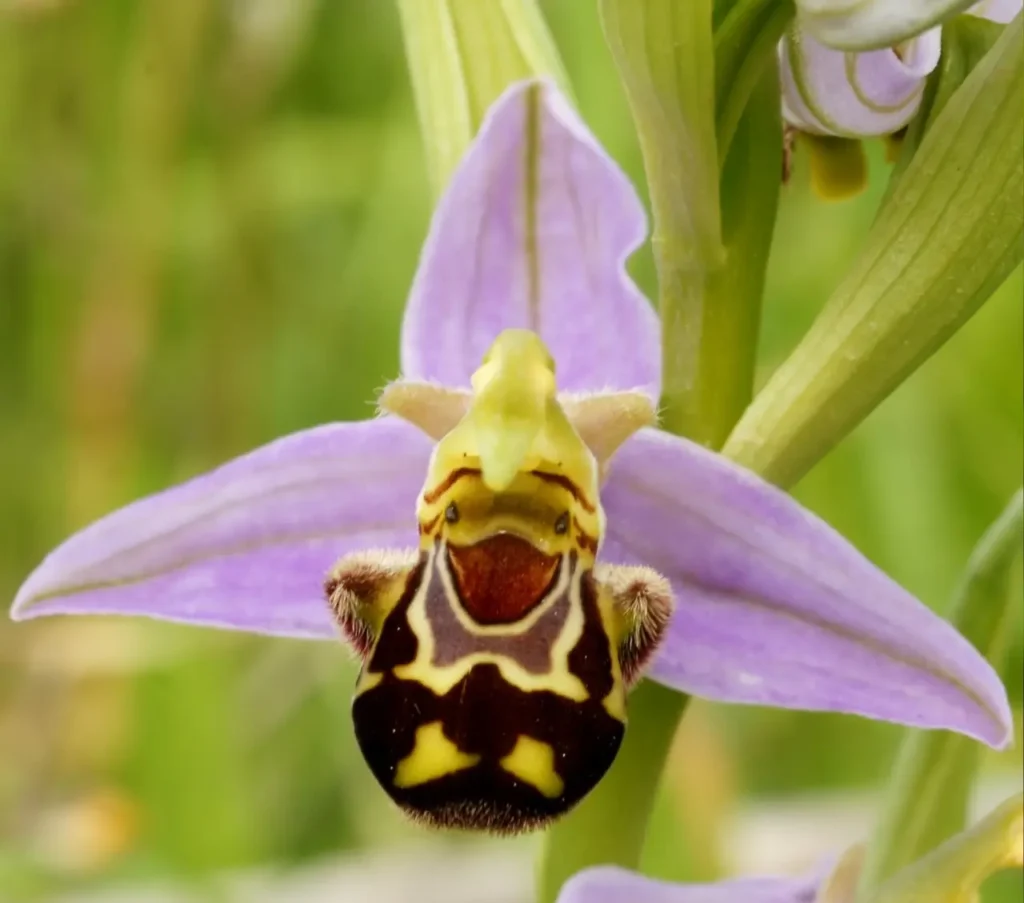
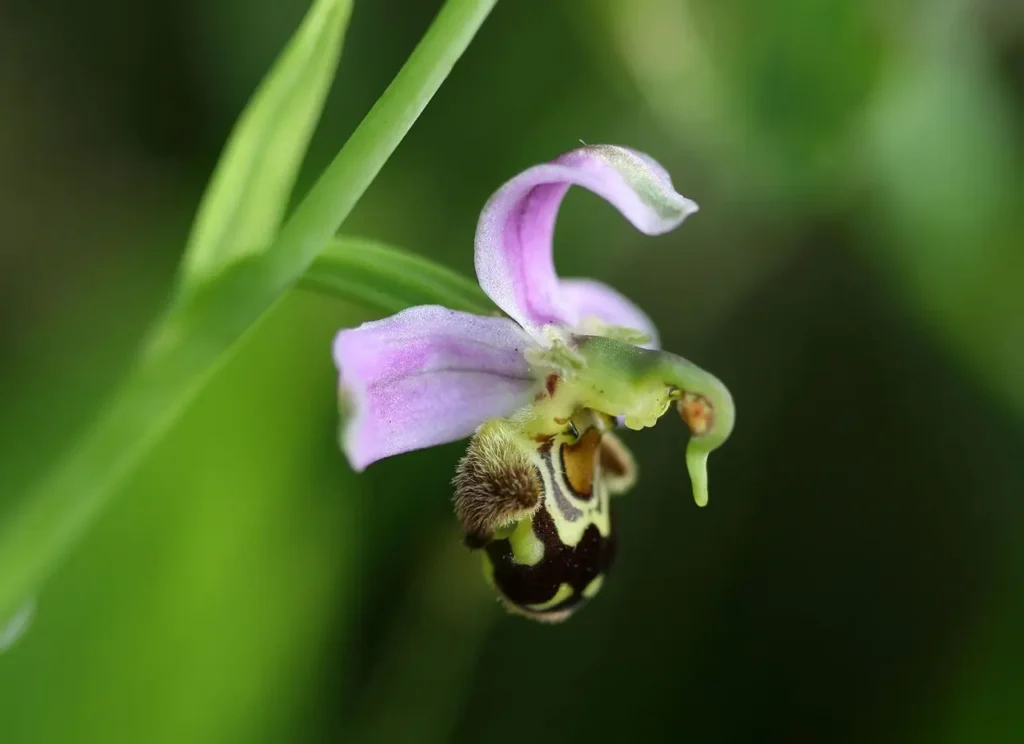
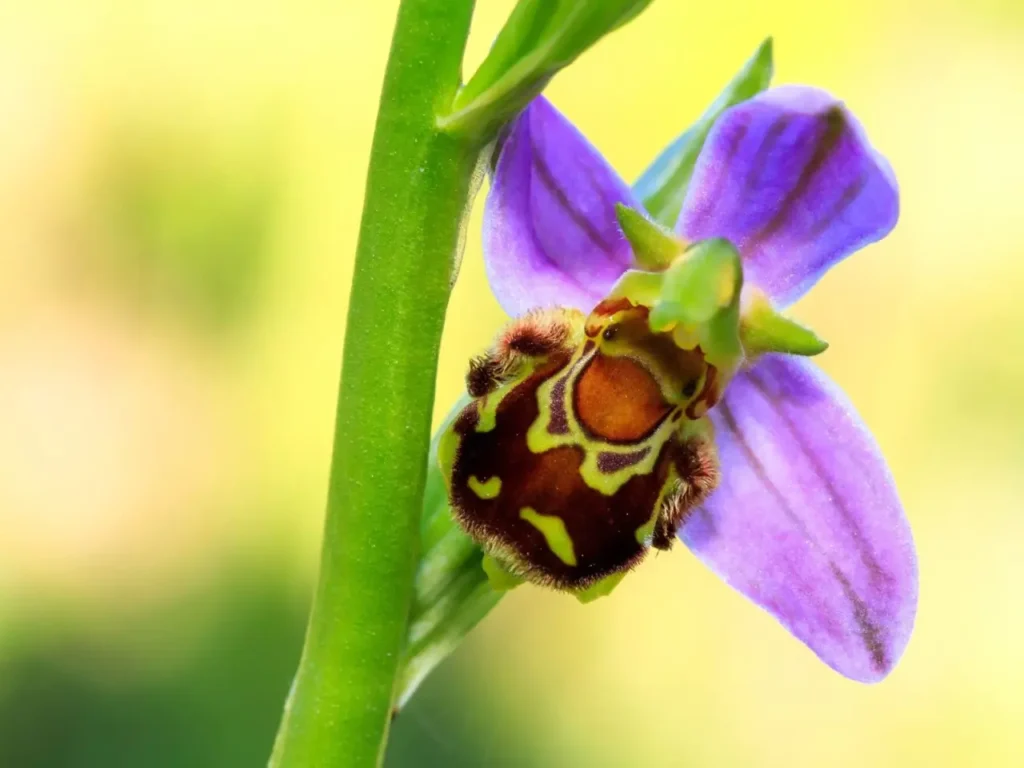
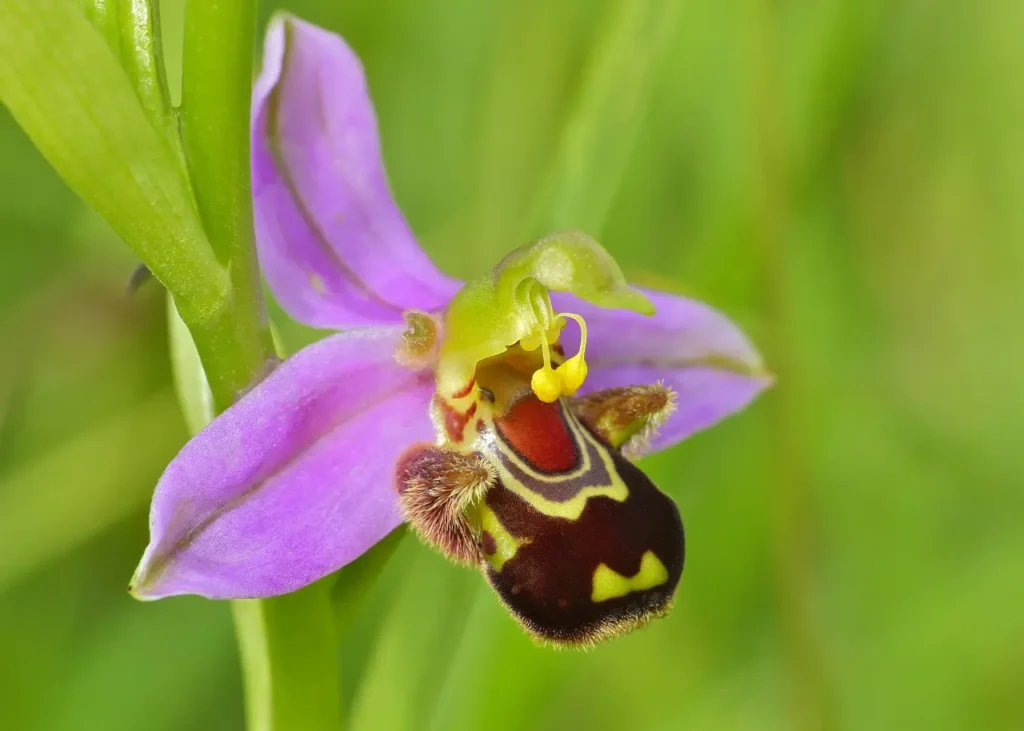
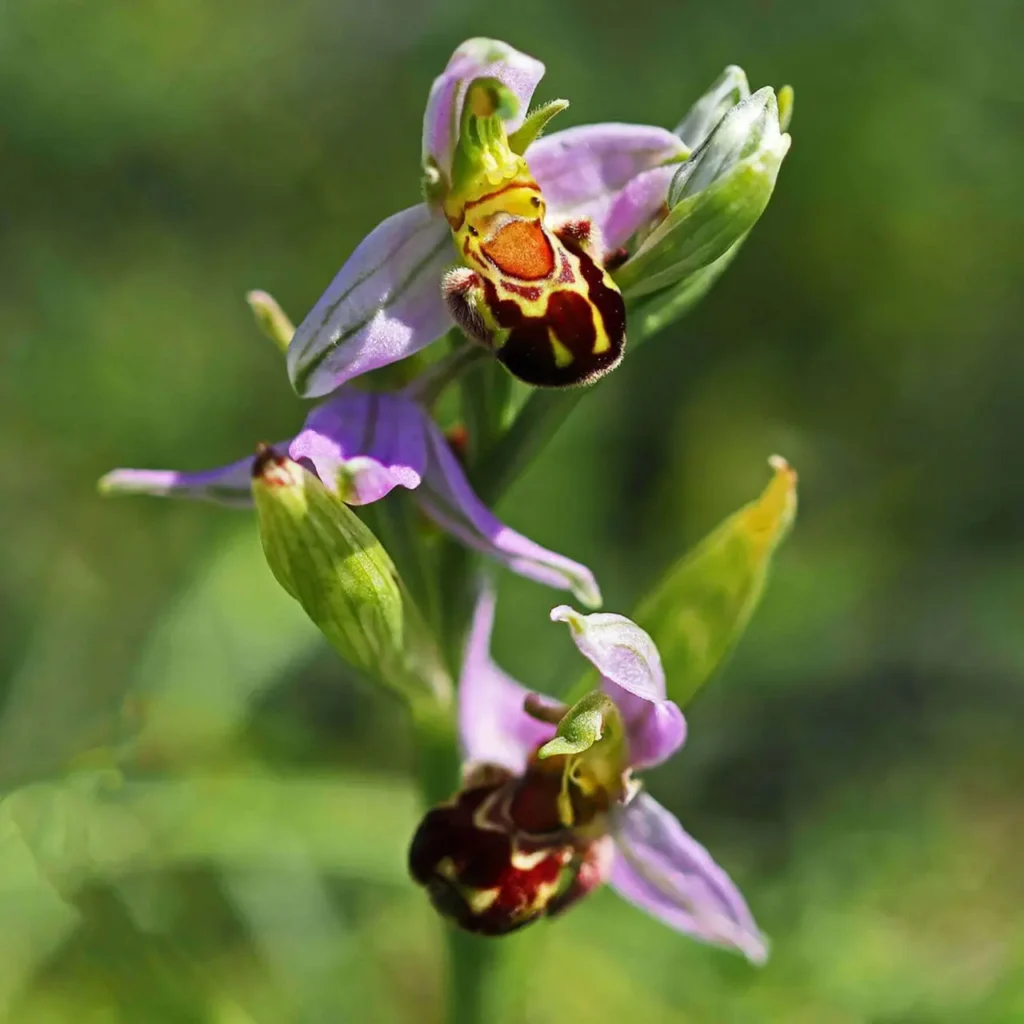
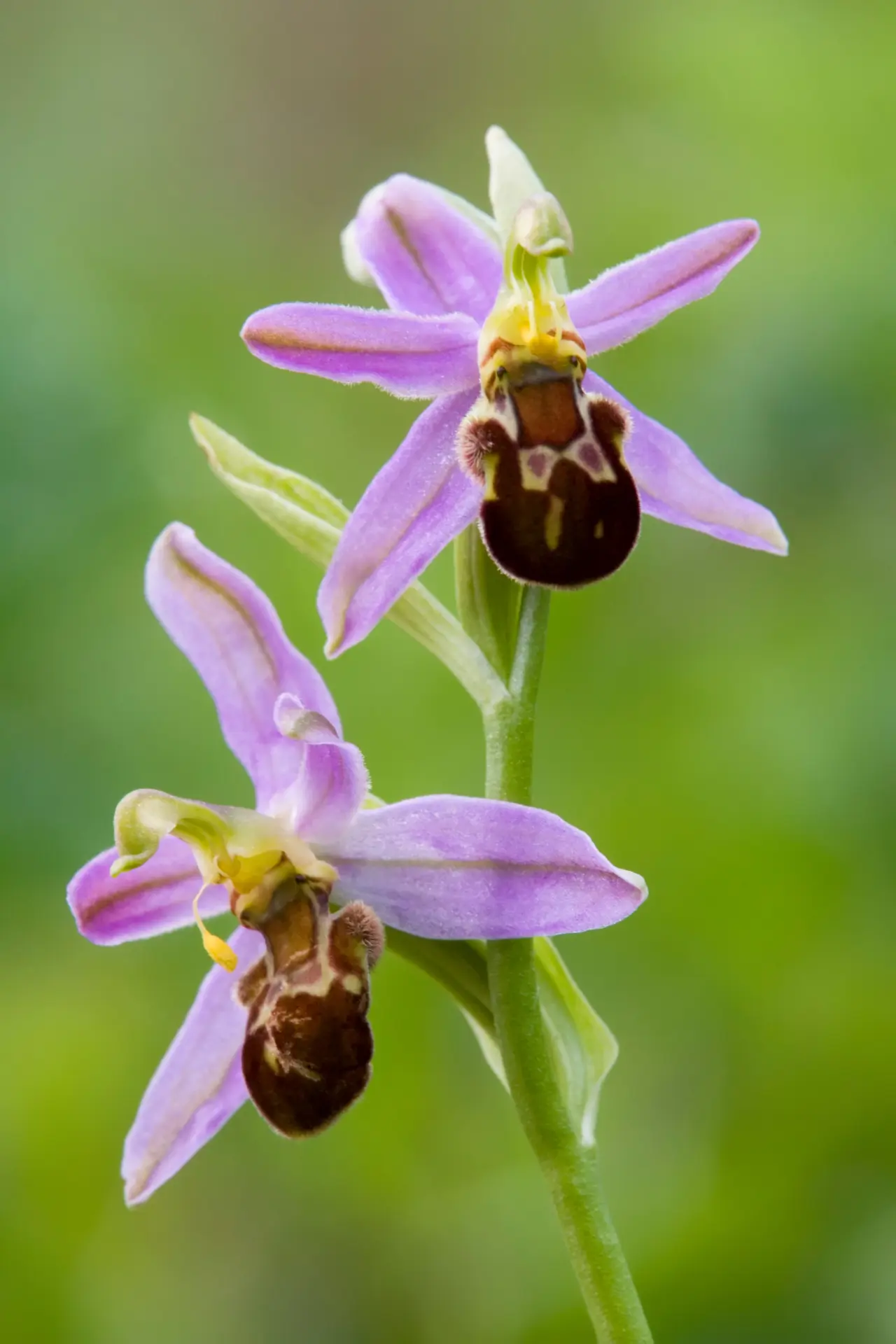
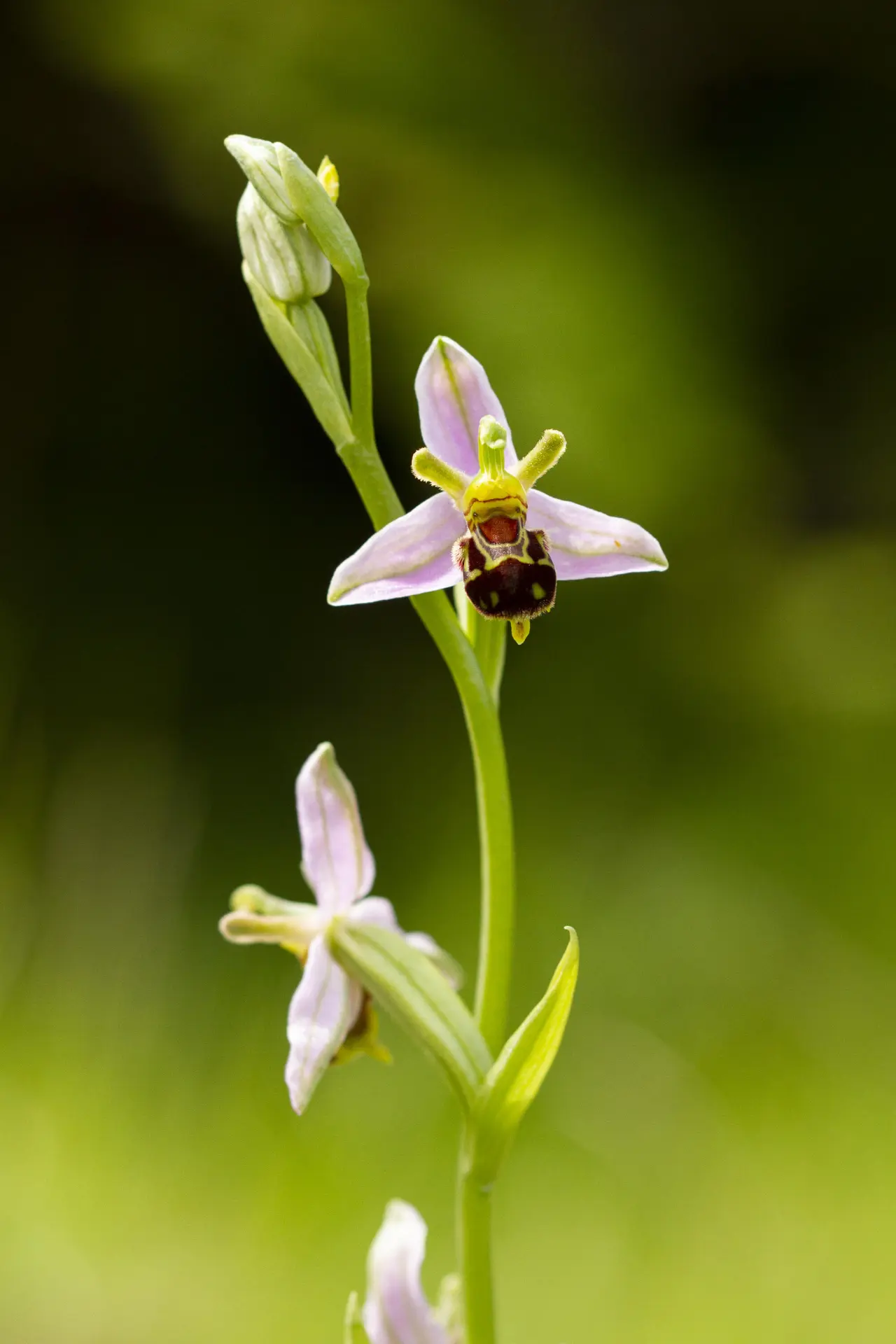
Appearance and Mimicry
The Bee Orchid’s distinctiveness lies in its uncanny resemblance to a bumblebee. The flower has evolved to mimic the appearance and scent of a female bee, a clever strategy to attract male bees for pollination. The petals of the Bee Orchid feature a unique combination of colors, with shades of pink, white, and brown, mimicking the markings of a bumblebee’s body. The central lip of the flower further imitates the shape and texture of a female bee, luring male bees into the deceptive embrace of the flower.
Behavior and Pollination Mechanism
The Bee Orchid’s mimicry goes beyond its visual appearance. The flower releases a scent that closely resembles the pheromones emitted by female bees, creating a powerful olfactory illusion. Male bees, deceived by this scent and the visual cues, attempt to mate with the flower, inadvertently transferring pollen in the process. As they move from one deceptive flower to another, the pollinia (pollen packets) attach to the bee’s body, facilitating cross-pollination when the bee visits another Bee Orchid.
Habitat and Distribution
Bee Orchids are native to various parts of Europe, including the Mediterranean region, the United Kingdom, and parts of Scandinavia. They can be found in a variety of habitats, including meadows, grasslands, and open woodlands. These adaptable orchids thrive in well-drained soils and prefer areas with ample sunlight. Their distribution is often influenced by the presence of suitable pollinators, as their survival relies on successful pollination by male bees.
Conservation and Threats
The Bee Orchid faces several threats to its survival. Habitat loss due to agricultural practices, urbanization, and land development poses a significant risk to these delicate flowers. Additionally, the decline in bee populations due to pesticide use and habitat degradation can negatively impact the Bee Orchid’s ability to attract pollinators. Conservation efforts should focus on preserving natural habitats, promoting sustainable land management practices, and raising awareness about the importance of protecting both orchids and their pollinators.
Cultural Significance
The Bee Orchid has captured the imagination of many and holds cultural significance in various regions. Its unique appearance and mimicry have inspired folklore and legends, symbolizing deception and the power of adaptation. In some cultures, the presence of the Bee Orchid is considered a sign of good luck or fertility, while in others, it represents the delicate balance of nature and the interdependence of species.
The Bee Orchid, with its remarkable mimicry and intricate pollination mechanism, stands as a testament to nature’s ingenuity. Its ability to deceive and attract its pollinators showcases the intricate relationship between orchids and bees. By understanding and appreciating the beauty and adaptive strategies of the Bee Orchid, we can foster a deeper connection to the natural world and inspire conservation efforts to protect these remarkable flowers and the ecosystems they inhabit. Let us celebrate the brilliance of the Bee Orchid and work together to preserve the delicate balance of our natural environments, ensuring the continued existence of these captivating orchids for generations to come.
